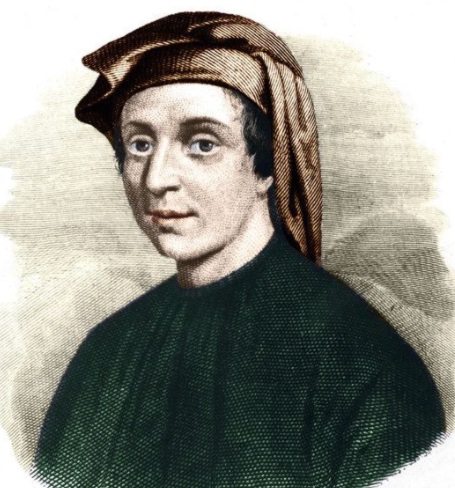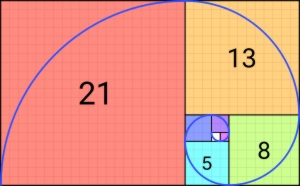| Fibonacci Day 2022 |
| Written by Sue Gee | |||
| Wednesday, 23 November 2022 | |||
|
Did you know that today is Fibonacci Day? It honors the 12th century Italian mathematician known for the number sequence that is regarded as "nature's secret code". The day is celebrated annually on November 23. Before you read on can you work out why this date was chosen? As you most probably know the Fibonacci sequence is a very simple pattern formed by summing the two previous integers. It can start with any two numbers, but as mathematicians start counting from 0 the most usual pattern is: 0,1,1,2,3,5,8,13,21....... Due to its simplicity it is frequently used in coding exercises and examples of recursion and so becomes part of a programmer's algorithmic toolbox.
The man of the hour, or rather of the day, is Leonardo Bonacci one of the most prominent mathematicians of the Middle Ages. Son of an Italian merchant and customs official who ran a trading post in Bugia in modern day Algeria, Bonnaci was educated in Bugia where he learned about the Hindu-Arabic numeral system with its 10 digits (including 0) and place value system. So when as a young boy he travelled around the Mediterranean with his father, meeting merchants and observing their methods of doing arithmetic he appreciated its advantages over the Roman numerals still in use in Europe. His first claim to fame is that in 1202, he completed the Liber Abaci (Book of Abacus or The Book of Calculation), which, written in Latin, popularized Hindu-Arabic numerals in Europe. The first translation of this book, one of the most important books in the history if European mathematics, into Modern English was made for the 800th anniversary of its original publication and it is regarded as a Best Seller on Amazon - see side panel. As well as showing introducing numerals and their practical use in for example converting different currencies, and calculating profit and interest, the book also discussed irrational numbers and prime numbers. It also posed and solved a problem involving the growth of a population of rabbits: “A certain man put a pair of rabbits in a place surrounded by a wall. How many pairs of rabbits can be produced from that pair in a year if it is supposed that every month each pair begets a new pair from which the second month on becomes productive?” The solution, generation by generation, is the sequence of numbers we now refer to as Fibonacci numbers. From the name you might assume he "invented them" but in fact the sequence had been described by Indian mathematicians as early as 200 BC in work by Pingala on enumerating possible patterns of Sanskrit poetry formed from syllables of two lengths. Wikipedia tells us that the name "Fibonacci", derived from "filo Bonacci" meaning "son of Bonacci" was "made up in 1838 by the Franco-Italian historian Guillaume Libri" whereas during his lifetime Leonardo Bonacci was also known as "Leonardo Bigollo Pisano", Leonardo the traveller from Pisa. As well as modelling the population of rabbits, the Fibonacci sequence crops up time and time again in nature. Petal arrangements in flowers, the ordering of leaves in plants, the shell of the nautilus, spirals in pineapples, the DNA molecule and even hurricanes show patterns that correspond to the sequence. In addition data storage and processing uses this number sequence and is also useful in the trading of stocks and architecture. After the first four numbers, the ratio of any number to its next highest number approaches 1.618, the Golden Ratio which, as well as being evident in the natural world, is prized in art and architecture -objects whose length and breadth exhibit the Golden Ratio are thought to be the most pleasing to the eye. And to return to the question posed at the start, November 23 is Fibonacci day because when the date is written in the mm/dd format (11/23), the digits in the date form a Fibonacci sequence: 1,1,2,3. But you knew that already.
More InformationRelated ArticlesPi Day 2022 - It's Irrational!!! Pi Day 2020 - A Meditation On Numbers To be informed about new articles on I Programmer, sign up for our weekly newsletter, subscribe to the RSS feed and follow us on Twitter, Facebook or Linkedin.
|
|||
| Last Updated ( Thursday, 24 November 2022 ) |





